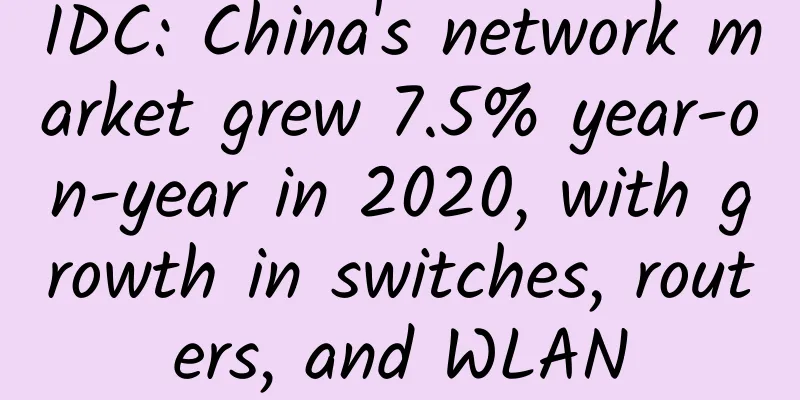How to deploy 5G and edge computing?

|
The telecommunications sector around the world is on a mission to revolutionize their business operations using lightning-fast 5G networks. The convergence of 5G and edge computing in the telecommunications industry has brought unprecedented opportunities to businesses across different sectors, revolutionizing the industry, driving new revenue streams and enriching user experience. As 5G deployment expands, edge usage continues to increase in all aspects of consumer and enterprise life. It is expected that by 2035, the digital transformation of the global manufacturing industry driven by 5G and edge computing will create an additional $1.5 trillion in revenue. The healthcare industry is also set to undergo a profound transformation, with the global healthcare edge computing market expected to reach $8.9 billion by 2025. Therefore, while non-telecom pioneers continue to develop technologies and dictate market dynamics, those that neglect to develop an edge-centric strategy could jeopardize their position in the expanding market. Whenever a new technology enters the market, there are always questions about how to integrate the business case, return on investment, etc. To successfully implement 5G and edge, enterprises need to identify killer use cases, create solid business cases, and adopt these strategies to drive revenue and growth. This requires a deep understanding of the market, customer needs, and the origins of the technology itself. The industry, regulators, original equipment manufacturers (OEMs), system integrators (SIs), and communication service providers (CSPs) all need to address challenges such as infrastructure investment, scalability, interoperability, data security, privacy, and skills gaps, while seeking to unlock all aspects of monetization. While it may be tempting to dive headfirst into the hype, there are several technical and financial factors to consider before deploying. Infrastructure investment: The deployment of edge computing nodes, 5G networks, and related technologies can be capital intensive. Enterprises and CSPs need to carefully plan their investments to ensure a reliable return on investment. Collaboration between CSPs, technology vendors, and enterprises will enable the sharing of expertise, resources, and infrastructure to drive innovation and accelerate monetization efforts. Scalability and interoperability: Interoperability issues can arise between different devices, platforms, and networks, hindering seamless integration and limiting the scope of profitable opportunities. Enterprises and CSPs must address these challenges by adopting open standards and collaborating with industry stakeholders. Customer-centric approach: By tailoring services and experiences to customer needs, enterprises can increase adoption and loyalty, while CSPs can position themselves as trusted partners in the digital transformation journey. Data security and privacy: Edge devices may be more vulnerable to cyber threats, and data transmission between edge nodes and central systems must be protected. Strong security measures and privacy policies should be implemented to build trust with customers and protect sensitive data. Privacy policies should be transparent, ensure compliance with relevant regulations, and build trust with customers. Regular security audits and updates are essential to address emerging threats. Talent and skills gaps: The rapid development of 5G and edge computing requires a skilled workforce that can manage and monetize these technologies. Talent and skills gaps can be addressed by investing in training programs, building partnerships with educational institutions, and promoting industry certifications. Regulation: While governments around the world are working to regulate issues related to 5G spectrum interference, standardization, cybersecurity, and net neutrality, the cornerstone of success is influenced by the role of public-private partnerships. The adoption of an effective regulatory framework will ultimately be the result of cross-border collaboration with industry participation and ecosystem partners playing their respective roles. Go-to-market: Ecosystem partners need to develop innovative use cases and partnerships to demonstrate the value of low-latency services, target high-potential industries, and offer compelling pricing models to attract early adopters. The impact of integrated edge computing and the opportunities it brings should not be overlooked in the telecommunications sector. 5Gb2B applications leveraging dedicated networks and multi-access edge computing (MEC) enable extremely low latency for data applications by extending cloud computing capabilities to the edge of wireless networks. Digital twins, computer vision, virtual and augmented reality, warehouses, AI robots, the metaverse and many other applications are examples of the same. In summary, the advent of 5G monetization will bring new concepts and ecosystems, along with challenges that can be addressed through collaboration, innovation, and customer-centric development, thereby building a sustainable path to success in the digital era. |
<<: Implementing Http service to receive POST request in Qt
>>: Five-minute technology talk | The next milestone in the 5G era: 5.5G
Recommend
Zigbee, BLE and Bluetooth Mesh, how to choose the best solution?
In the world of IoT, wireless communication techn...
Video and Network: 5G 700MHz large and small tower modes and wireless uplink enhancement technology
Labs Guide With the development of mobile communi...
IPv6 brings huge opportunities for managed service providers
For MSPs, helping customers transition to IPv6 co...
Driven by the new infrastructure, will data center construction be "rushed"?
The data center construction trend has not yet st...
Health and Risk: A New Model for Data Center Capacity Management
Some analysis companies believe that capacity man...
Gartner: Global 5G infrastructure market size will double to $8.1 billion in 2020
According to Gartner's latest forecast, the g...
Knowledge literacy in the 5G era: Understanding the Internet of Things
What is IoT The Internet of Things (IoT) is abbre...
Why are operators competing to launch new 4G packages as 5G is the mainstream?
[[406115]] In 2021, when 5G is rapidly popularize...
Under the new IT operation and maintenance model, full-stack traceability helps you solve application performance monitoring problems
[51CTO.com original article] In 2016, Gartner cha...
5G and 6G networks will empower emergency responders and smart city projects, researchers say
While 5G and 6G networks could help first respond...
Kubernetes uses OkHttp client for network load balancing
During an internal Java service audit, we discove...
How should a small LAN with less than 10 or 100 people be established?
What is a local area network? The so-called local...
80VPS: KVM in Los Angeles MC data center is online, 1G memory package starts at 199 yuan per year
Some time ago, we shared the news that 80VPS laun...
Yan Wangjia, a member of the National Committee of the Chinese People's Political Consultative Conference, submitted five proposals to the two sessions, calling for strengthening information security supervision
[51CTO.com original article] On March 3, the firs...
What will be the consequences if all three major operators upgrade to 5G in five years?
Seeing that domestic communication companies are ...









